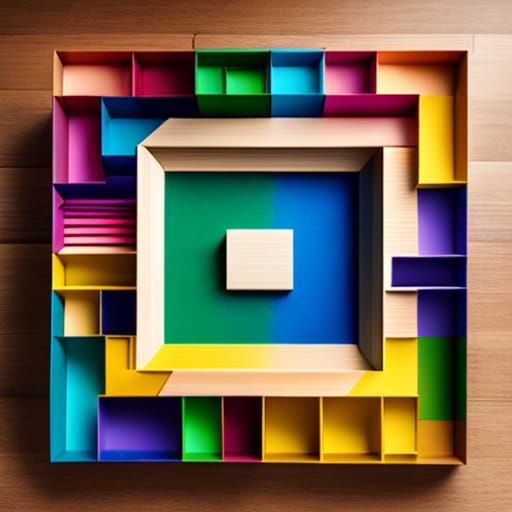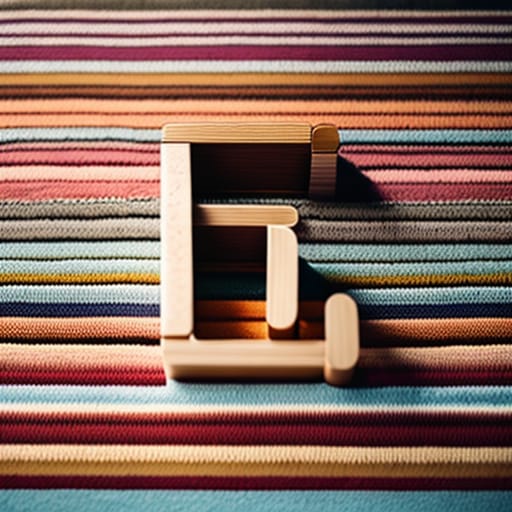Playing with blocks might seem like just fun and games, but this classic toy offers significant benefits for a child’s growth and learning in the early years. Simple block play builds crucial skills from language development to cognitive skills, setting the stage for success later in life.
When children play with blocks, they hone fine and gross motor skills by grasping, lifting, and balancing the blocks to stack and build. This type of play also supports key areas like:

Language Development
- Expands a toddler’s vocabulary as they learn words for colors, shapes, sizes, numbers and positional concepts.
- Builds expressive language as children develop stories around their block constructions.
- Strengthens a preschooler’s storytelling abilities through creative block play.
Literacy Skills
- Lays foundation for phonics and reading by learning letters, words and spelling when playing with alphabet blocks.
- Supports early writing development through pretend play writing signs and lists.
- Helps connect symbols to meanings (letters represent sounds and words carry meaning).
Math and Cognitive Skills
- Develops strong spatial perception and visualization as children rotate and relate blocks in space.
- Enhances pattern recognition abilities by creating repeating block patterns.
- Allows experimentation with shapes, sizes and positions through block construction.
- Promotes critical thinking as children problem solve during building.
Social-Emotional Growth
- Builds confidence through successfully completing a block structure.
- Provides emotional release through freely knocking down block buildings.
- Develops social skills like sharing, turn-taking and cooperation during group play.
This article will explore all the evidence-based benefits of block play for toddlers and preschoolers.
Block Play Supports Language Development
Language growth occurs rapidly in early childhood, and block play provides an engaging, hands-on way to expand a child’s vocabulary and communication abilities during this critical developmental window.
Learning Words for Shapes, Colors and Positions
Simple wooden blocks featuring a rainbow of colors and standard shapes like squares, rectangles, triangles and arches allow a child to physically manipulate key geometric concepts. Playing with blocks helps toddlers and preschoolers learn essential words for these shapes and the positional terms like “on top,” “under,” “next to,” “around,” “through,” “behind,” etc.
Graduated blocks featuring different colors and sizes also build early math vocabulary for relative size like tall, short, small, big, long and length measurement terms like inch, foot. The physicality of feeling “big, heavy blocks” versus “little, light blocks” cements these size and weight concepts.
Practicing Expressive Language Through Block Play
As toddlers gain vocabulary for block characteristics like colors and shapes, they start combining these words in short phrases to direct their building.
A 2-year-old may say “blue one here,” “big on top,” “tower tall,” or “red circle block.” Calling out requests like “More reds!” “Yellow too!” or asking “Where triangle go?” allows toddlers to practice speaking in short sentences and articulating vocabulary words.
Preschoolers develop more complex, multi-phrase sentences through block construction. A 4-year-old playing with ramps and marble runs will learn to describe sequential actions happening to the marble like “The marble went down the ramp first, then through the tunnel next!”
These rich descriptive sentences lay the groundwork for early literacy and creative storytelling.
Storytelling Through Blocks Promotes Imagination
As language ability grows, block play allows toddlers and preschoolers to translate abstract thoughts into words through pretend conversations with block characters or by making up stories around their block structures. An 18-month old nurturing a baby doll may stack a few blocks as a “bed.” A 3-year-old proudly recounts that her “castle has two tall, skinny towers with pointy tops and a wide, strong bridge to cross the lava!”
This ability to create narratives, describe multi-step actions and imagine block objects as real-world items appeals to young children’s pretend play drive while advancing expressive language. Parents can prompt storytelling with open-ended questions like “What’s happening with your blocks here?” for additional language practice.

Block Play Forms Literacy Foundations
While toddlers and preschoolers are not yet reading books or writing essays, key literacy fundamentals like phonics, reading comprehension and writing mechanics develop through block play. Mastering these pillars now helps ensure future reading and writing success.
Learning Phonics Concepts
Phonics teaches children that letters represent specific sounds that link together to form written words. This alphabetic principle remains essentially meaningless to youngsters until they grasp that symbols carry meaning. Finding the letter “B” block drives home that “B” represents the sound /b/ that verbally combined with other letter sounds spells “bed”, “boat” and other words.
Grasping this “symbols carry meaning” concept through letter blocks builds essential readiness for formal phonics instruction later on. And hearing letter sounds repeated while hunting for certain blocks cements sound-symbol connections for reading. A bonus? Alphabet blocks automatically provide individualized, self-paced phonics practice.
Writing Through Blocks
Developing writing ability begins years before properly holding a pencil to form letters on paper. Through pretend block play, children strengthen core writing readiness skills like symbolic representation, communication, fine motor control and left-to-right orientation.
A toddler building a “bridge” practices relating symbolic thinking by transforming simple blocks into a bridge concept. Block creations “require” signs dictating imaginary rules – printed using shoelaces for “letters.” Printing left-to-right orients young minds for reading and writing. These block writing motions exercise little hand muscles for eventually holding pencils correctly.
Supporting Reading Comprehension
Making sense of stories requires understanding sequencing, cause-effect relationships and predicting action outcomes – skills honed through block play plotlines. Successfully following directions to construct a particular block structure also relies on strong comprehension skills.
In dramatic block play, keeping track of multiple characters’ conversations promotes focus, attention and improved understanding – what good readers do constantly. Such comprehension gains may seem advanced for toddlers and preschoolers, but establish excellent reading readiness.
Blocks Build Math and Cognitive Skills
Playing with blocks promotes more than just language and literacy competencies; it also boosts logical reasoning and problem solving integral to math, science and overall academic success.
Enhancing Spatial Visualization Abilities
Orienting, rotating, flipping multi-sided blocks to create structures requires strong spatial processing and visualization skills. Physical handling allows trial-and-error experimentation to discover how to relate shapes and gain spatial perspectives. Mastering “mental rotation” of blocks supports higher-level math like geometry.
The challenge? Toddlers’ and preschoolers’ spatial skills remain limited, so physically manipulating blocks builds this mental spatial sequencing crucial for math and science learning later on.
Pattern Recognition Practice
Creating simple A/B block repetitions like red/blue or circle/square patterns forms early sequencing ability – and pattern recognition remains fundamental to math. Continuing established patterns (red/blue/red/blue) stretches a child’s thinking. Complex patterns like A/B/B/A/B boost focus and memory retention, which facilitates academic learning.
Problem Solving and Critical Thinking
When a block tower topples unexpectedly or structures lean instead of stacking neatly, children hone basic problem solving skills by discovering root causes and hypothesizing solutions. Testing theories – “Will triangles or long blocks stack better?” “What if I turn this block this way?” – allows toddlers and preschoolers to strengthen critical thinking abilities, persistence and creativity essential for all learning.
Through experimenting block play also builds science skills like questioning, predicting outcomes and manipulating variables.
Social-Emotional Growth Emerges From Block Play
Block play independently fosters emotional growth and social skill development vital for classroom readiness. Taking turns, sharing materials, expressing feelings and controlling reactions are interpersonal abilities preschoolers and kindergarteners need – competencies block play teaches organically.
Developing Social Skills
Cooperative block play demands sharing space, materials and ideas to jointly create structures. Negotiating who uses coveted curved or long pieces first means reconciling desires through compromises like timers or trades. Navigating multiple players’ block visions requires communication, cooperation and collaboration – essential kindergarten readiness skills.
Parallel block play still allows modeling behaviors, taking cues from peers’ ideas and conversing about respective structures to nurture social adeptness. Playing blocks side-by-sidesupports relationship-building too.
Emotional Release and Self-Regulation
For young children bursting with ideas, emotions and energy, block play satisfies an outlet to channel feelings appropriately. Independence in building whatever their imagination envisions provides a sense of control very reassuring at this age of increasing expectations. The pure joy from block accomplishments offers up emotional satisfaction as well.
Yet when unable to execute grand block schemes frustration percolates; block structures eventually fall amid play. Recovering resilience emerges from working through these crumbled towers and tunnels. Changing course, modifying plans and rebuilding block projects provides toddlers and preschoolers an opportunity to self-regulate emotions and respond appropriately to upset. Mastering self-regulation now improves school behavior later.
Through supporting language, cognitive, literacy and social-emotional competencies necessary for academic success, block play provides young children an accessible, engaging way to pick up pivotal skills for present and future learning.

Best Blocks to Support Early Childhood Development
Simple, basic wooden blocks in a range of shapes, sizes and colors remain the best blocks for open-ended building play that stretches children’s creativity and skills. Some helpful block characteristics include:
- Traditional Wooden Building Blocks – These classic blocks featuring squares, rectangles, cylinders and arches allow endless structural combinations. Smooth, sanded hardwood feels nice for small hands.
- Graduated Wood Blocks – Block sets with graduated sizes from small 1-inch cubes to long 5-inch rectangles promote stacking skills and size/length contrasts.
- Colorful Wood Blocks – Vibrant colors appeal aesthetically yet also provide color/shape vocabulary building through sorting/matching activities.
- Alphabet/Number Blocks – These letter and number blocks strengthen literacy and math skills through symbol recognition and counting practice.
- Specialty Blocks and Accessories – Curved, window or door blocks along with play people, signs and vehicles boost imaginative play.
Well-constructed hardwood blocks withstand frequent use and endless configurations to support developing minds and bodies during toddler and preschool years – making blocks well worth the investment.
The Takeaway: Let Imaginations Block-Build During Play
A classic toy for the ages, simple blocks offer a treasure trove of developmental benefits for toddlers and preschoolers across language, literacy, cognitive, social and emotional learning spheres. So next time you watch youngsters endlessly stacking wooden blocks….just let imaginative play build critical skills!
Frequently Asked Questions
What are the benefits of block play for language development?
Block play expands a toddler’s vocabulary by helping them learn words like colors, shapes, positions. Handling blocks also builds expressive language as children learn to describe sizes, shapes and placement. Creating stories around structures promotes storytelling and imagination.
How do blocks help early reading and writing skills?
Playing with alphabet blocks aids phonics skills as children connect letters to sounds. Building signs and lists with blocks provides early writing practice with symbolic representation and left-to-right orientation. Following “construction directions” for block structures uses similar comprehension skills needed for reading.
Why are blocks good for developing math concepts?
Grasping spatial concepts happens by rotating multi-sided blocks when building. Seeing repeating block patterns shows foundational patterning abilities for math.problem solving skills kick in when structures fall and children seek solutions. Quantifying block sizes and counting pieces also emerge during play.
Can blocks really help social-emotional growth?
Trying to take turns or collaborating on shared visions demands communication, compromise and cooperation – essential social skills. Completing a block structure builds confidence while knocking them down releases emotions. Managing frustration from build failures yields self-regulation gains.
What types of blocks are best for toddlers?
For toddlers, sturdy wooden building blocks with standard shapes like squares, rectangles and arches allow basic stacking. Choosing blocks ranging from small 1-inch to 5-inches long promotes size/length comprehension. Vibrant colors attract youngsters while helping learn color words.
Will playing with just blocks be enough learning?
While blocks offer tremendous benefits for early development, children need a stimulating mix of toys for well-rounded learning. Rotate blocks with puzzles, songs, books and gross motor activities indoors and outside. Support creative block structures with conversations to maximize learning during play.